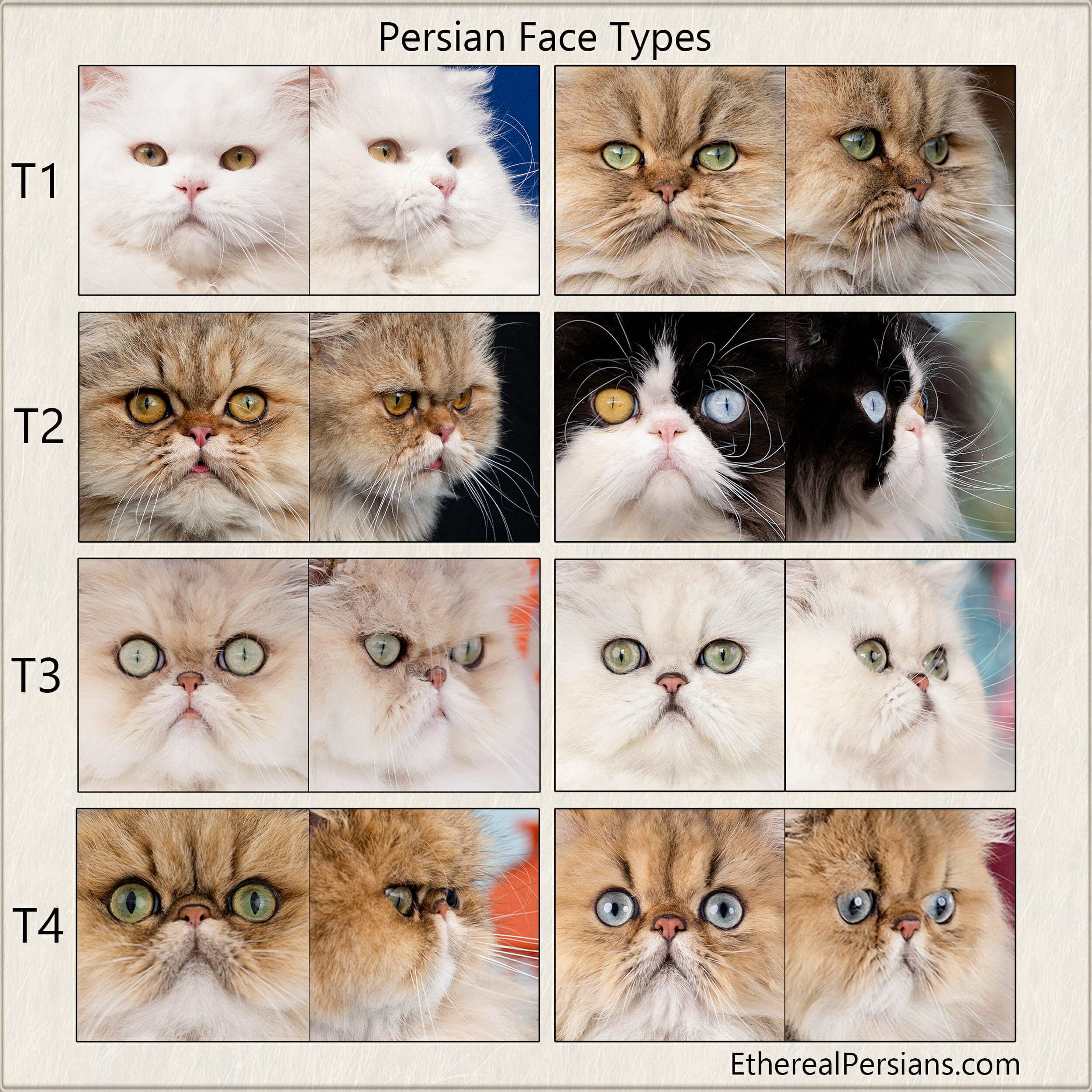A Breeders Guide For Reducing Tearing in a Cattery
A Guideline for Feline Breeders
Are you tired of tearing in your cattery? Perhaps you’ve eliminated all health concerns within your control such as allergens and upper respiratory infections but your kitties still cry. If this is the case it may be time for you to consider your felines facial conformation as the primary culprit for their leaky eyes. This article outlines the breeding practices I employ to decrease epiphora in my cattery. I offer tips useful for both pet owners and breeders regarding facial characteristics to avoid when buying or breeding your next brachycephalic cat to decrease the likelihood of congenital tearing.
Recognizing the Congenital Reason for Epiphora
As you probably already know, not all cats tear but most brachycephalic cats do. This problem arose during the transition from traditional to extreme face. When breeding towards shortened muzzles and high noses, the nasal acriminal system of pets, both feline and canine, becomes shorter, more narrow and acute. The tear duct and airway system is essentially crammed and instead of the tears flowing towards the back of the throat they leak from the eyes. This change often causes blockages that leads to persistent epiphora with severity ranging from minimal to severe.
Problems Caused by Chronic Epiphora
Chronic epiphora is an unsightly condition that predisposes pets to specific health problems, increases dissatisfaction with the breed and can lead to animosity between pet owner and pet. Facial dermatitis, increased risk of eye infections and ulceration are more likely to afflict cats who persistently tear. The #1 complaint I receive as a breeder is due to the increased facial maintenance some of my cats require in order to be kept clean and beautiful. Moreso, some cats loathe their eyes being cleaned which can lead to aversion between owner and pet. For these reasons, it is important for breeders to avoid propagating characteristics that predispose cats to tearing.
The four types of Persian faces: (1) Traditional (2) Doll Face (3) Flat Face (4) Extreme Face Tearing amount: (T1) Left – none / Right – none. (T2) Left – minimally / Right – minimally. (T3) Left – moderately / Right – minimally. (T4) Left – moderately / Right – minimally
Note: My examples of Type 1 resemble the doll face persian more than the traditional. I do not have any traditional persians in my breeding program. Those were the closest examples I could provide.
The degree of epiphora is impacted by the following features:
- Size and shape of eyes
- Size of nose
- Depth of nose break
- Distance between eyes and from eyes to nose
- Size of head
Here are 6 tips to help you choose a Persian less likely to tear:
- Smaller eyes are preferable to large.
- Walnut and almond eyes are preferable to round, hooded or teardrop eyes. * Eyes must be judged when in resting position.
- Broad straight nose leather is preferable to narrow rounded nose leather.
- No stenosis is preferable to any stenosis.
- Nose break should be smooth and not abrupt or lead to any folds in the face.
- Eyes should be set wide apart from each other and from the nose.
- The more extreme the cat the more preferable a broad (vs narrow) head.
One factor alone will not determine how much a cat tears. For example, T3-left tears just as much as T4-left despite having a different nose set. This is because the sum of their characteristics – good and bad – equal to the same degree.
All of these characteristics take experience to judge properly. Attention to detail is a must when selecting for pets or breeders that minimally tear.
